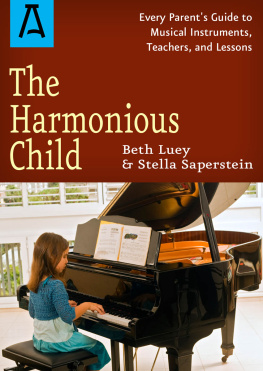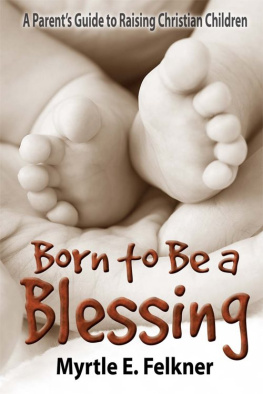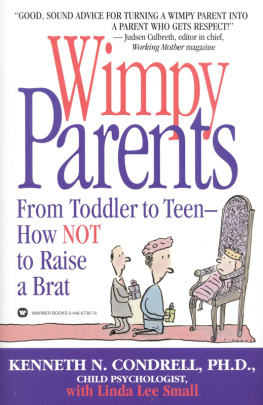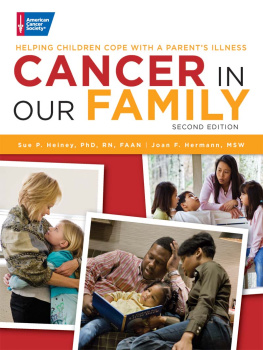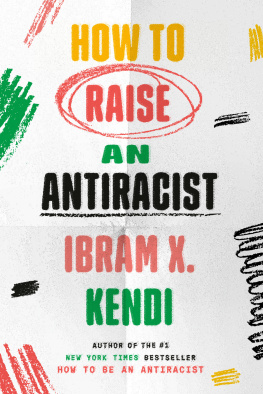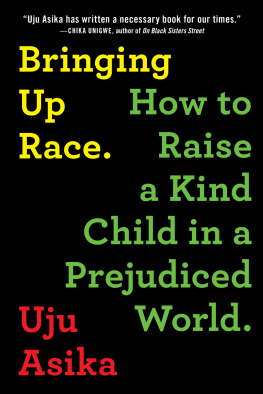Barbara Mathias
There is a certain risk in presenting the topic of racism in such a brief format as 40 Waysthe danger being that the book may be judged as minimizing the seriousness and the complexity of the topic. Nothing could be further from our intentions. Our choice of format grew out of our intent to be practical and realistic. Through personal experience we know that todays parents have little time or patience for reading more theory on child raising; and yet, they have little clear guidance on one of the most crucial aspects of parentinghow to respond to the racism that permeates their childrens world. (It was disturbing to find that the majority of parenting books dont cover or even mention racism, as if it werent a major factor affecting child development.) Parents need to know what to say when their three-year-old wants to be another color like one of his friends in nursery school, or when their fifteen-year-old is terrified of the racial tension in her school. They also need to educate themselves on how prejudice impacts a childs particular developmental stage from early childhood through adolescence. For instance, why an eight-year-old is so generous and fair in his friendships, only to become more socially judgmental when he reaches prepuberty.
This book has six sections: The first addresses all parents of children of any age; the remainder cover the five developmental stages of childhood and how they are affected by racism. Throughout the book we describe the racism that exists in the home, in school and throughout the community. We also touch upon the special needs of immigrants, international adoptions and mixed-race families. We ask all parents to identify the prejudice that goes back for generations in their families. We discuss the tendency students have to congregate by race, as well as the sham of poorly planned academic programs that masquerade as multicultural education. We make clear why it is so hard to make adult interracial relationships work, a prerequisite for being role models for our children. Most important, and intrinsic to each of these forty ways, we ask parents to face up to and talk about racism with their children and other adults.
This discussion is not just about blacks and whites, though that is often our focus because of the pattern of discrimination that has long been dominant in our American society. Here we speak to all parentsAsian, Hispanic, Native Americanand all the cultural variations within and between those races. Our sources of information come from educators and experts on child development, as well as from the anonymous testimony of parents and children throughout the country. We are particularly grateful to these families for their honesty and willingness to participate in this important project.
Halfway through the process of writing this book Mary Ann and I realized that our collaboration was a microcosm for what we were asking parents to dointeract with and accept people of other races. Mary Ann is black; I am white. With no history of friendship to boost us, we came together as journalists interested in writing a book on how racism affects children and their future. It all started out very polite and professional with just a touch of the uncertainty that comes with any collaboration. However, as we delved deeper into the project and our different perspectives became more obvious, it seemed we couldnt escape the clashes and pain. There were times when we argued vehemently, and one particular lost weekend, we insulted and questioned each others views with a passion that threatened to end our project Despite and because of all this, we have become friends, and our dialogue on race continuesas I imagine it will for years to come.
How did we work through our differences? By considering and discussing several contributing factors. First, as a white person, I could intellectualize the pain of minority peoples, but I couldnt experience it or describe it to the degree that Mary Ann did in her faxes to me or during our conversations. I had an extremely difficult time detecting and admitting to the racist nuances Mary Ann kept pointing out to me. Certainly, I was aware of prejudice in the world, but I didnt see it in every corner. Now I had to sensitize myself to the inequities in life. In time, I couldnt read a magazine or watch television without being aware of how few minorities were represented or how they were stereotyped. I couldnt go to a party or event without counting the numbers of whites versus minorities. I couldnt converse with my black and Asian friends without wondering if I felt superior. While interviewing grade school and high school children from other races, I was often brought to tears as they openly expressed their frustrations with our culture of white supremacy. And when interviewing parents from other races, I often wanted to walk away and get back to the comfort and privileges of my white world. I felt ashamed, but I would tell myself that their sufferings were too big and too unwieldy for me to handle.
Second, Mary Ann and I had dramatically different ways of expressing ourselves. The temptation for me was to label Mary Ann as the angry black, and Im sure she could have tagged me as the indifferent white. But our task was to break down stereotypes, not perpetuate them. After the dust settled, I told her that I have always been nonconfrontational because it worked best with my parents and siblings; and she told me that she has always been outspoken just like her parents and many of her siblings. Furthermore, she knows whites who, like her, are confrontational, and likewise, I know blacks who are nonconfrontational. The source of our differences was as much our inherent personalities and our histories of family dynamics as it was race.
Third, there is a difference in our ages and our stages of motherhood. I am in my fifties, recently divorced and the mother of five grown children. Mary Ann is in her forties and the recently divorced mother of a six-year-old son. Though not a generation apart, our experiences are worlds apart. When the feminist revolution and the debate over Vietnam were raging, I was diapering three small children and caught up in keeping the family running. I never had the involvement in social issues that Mary Ann and many of the women her age did. Until my youngest child was born, I was fortunate not to have to work outside the home; but once I started working, I was drawn to writing on family and womens issues. It is only in the past 15 years that I have learned to question and challenge the unfairness inflicted on minorities and women. Mary Ann has been in the thick of this debate from the time she was a young child.
This is what we all need to do when we relate to people from other races. As you become impatient or annoyed with the way you see things differently, you must consider all the factors at play that make you who you are, and the other person who she is. You both need to talk about and recognize the influence of your culture, personality, age, money, education and family circumstancefor example, the fact that your grandmother raised you or that you never traveled beyond your hometown until your adult years.
From the start of this project I let Mary Ann know that I was writing this book more out of regret than out of experience. Yes, I raised five children, all of whom attended public schools with racially diverse populations. And from the time they were very little, I taught my children to respect others, just as they should respect one another. But as for discussing racism or prejudice specifically, those words came up only if the children initiated it, which was rarely. Like many white parents during the 70s and up through the early 90s, I was able to skirt the issues surrounding racism and somehow keep a clear conscience. Fortunately, perhaps miraculously, my children are not racist. But there are still issues to talk aboutsuch as the racism on their college campuses or in their workplaces. Through the work on this book, I am learning how to bring up the topic of racism with them, express my opinions and listen to theirs. Its never too late to parent against prejudice. If and when my children marry and have children of their own, I plan to be a very forthright grandmother, full of questions and challenges for my grandchildren.




